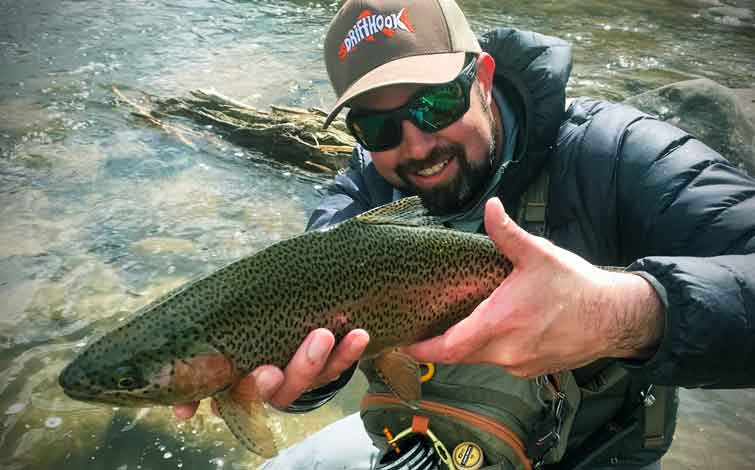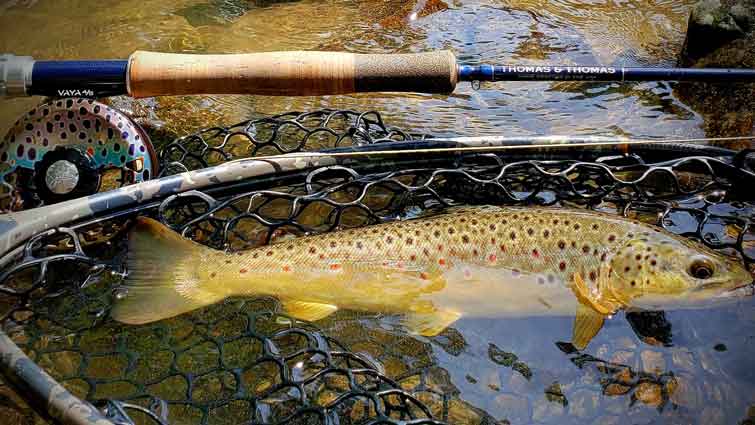When it comes to fly fishing, having the right gear can make all the difference. And one of the most essential pieces of gear is your boots. So, what are the best boots for fly fishing?
The best boots for fly fishing will be comfortable and waterproof. They should also provide good traction, especially if you’ll be fishing in wet or icy conditions. Rubber-soled boots are best for anglers who will be walking a long distance while fishing.
Rubber-soled wading boots function equally well on land as they do in the water, unlike felt-soled boots. In this article, we'll look at the features of the most common types of fly fishing boots, what you should look for when purchasing a pair, and answer some of the most commonly asked questions about fly fishing boots.

What to Look for In Fly Fishing Boots
There are a few things to consider when choosing a pair of boots for fly fishing. First, you’ll need to decide what type of terrain you’ll be fishing in. If you are fishing in streams and rivers, you’ll need a pair of lightweight boots that can easily navigate through the water. If you are fishing in colder climates, you may want to consider a pair of insulated boots that will keep your feet warm even in the coldest weather.
There are some characteristics that you should look for when choosing a pair of fly fishing boots. They should be lightweight, have good traction, be able to keep your feet warm and be comfortable enough to wear all day.
When you’re looking for a new pair of fly fishing boots, it’s important to do your research and find the right pair for your needs. There are several different factors to consider, including:
- Style of boots
- Sole Material
- Insulation
- Cleats
- Boot Materials

Fly fishing boots come in a variety of different styles, so you need to decide which style is best for you. There are boots designed specifically for wading in rivers and streams, as well as boots that are designed to be used in cold weather. If you’re primarily going to be fishing in cold weather, you’ll want to look for a pair of boots with good insulation.
The sole material is also important, as it affects the traction of the boots. Most fly fishing boots have soles made from rubber or synthetic materials, which provide good traction on wet surfaces. Some boots also have cleats or spikes that provide even better traction. Let's take an in-depth look at the characteristics of fly fishing boots that are most important to anglers.

1. Style of Boots
Boot style is a matter of personal preference, but most fly fishermen prefer a lightweight, low-profile boot. This type of boot is easy to move in and doesn’t get in the way when you’re wading. It’s also important that the boots are durable to hold up to rough environments.

2. Insulation
If you’re going to be fishing in cold weather, it’s important to choose a pair of boots with good insulation. Insulated boots will keep your feet warm even when the temperatures are below freezing.

3. Sole Material
If you plan on doing a lot of hiking in your boots, it’s essential to choose a pair with soles that are both durable and flexible. The sole material is another vital consideration for fly fishers. Most fly fishing boots have soles made from rubber or synthetic materials, which provide good traction on wet surfaces. Wader boots also come in felt-coated material, which is excellent for wet conditions. But be careful; some states have banned felt wading boots.

4. Cleats
Cleats provide even more traction on wet surfaces and can be a good choice for fishers who frequently fish in streams or rivers. However, cleats can also be difficult to walk in on dry land, so you’ll need to decide whether the extra traction is worth the added difficulty.
Depending on the terrain you’ll be fishing in, you may also want to consider boots with lugs (claws or spikes that provide traction on soft surfaces). Lugs can provide good traction on muddy banks and other soft surfaces, but they can also wear down quickly.

5. Boot Materials
When choosing the best boots for fly fishing, there are several things to consider. The first thing to think about is what type of boot. This type of boot is easy to move in and doesn’t get in the way when you’re casting. It’s also important that the boots are waterproof, as you will be fishing in wet environments.
If you plan on fishing in wet conditions, it’s essential to choose a pair of boots that are waterproof. While all fly fishing boots are at least somewhat water-resistant, some are more waterproof than others. If you frequently fish in rain or snow, you’ll want to make sure your boots have a good waterproof seal.

If you’re going to be fishing in cold weather, it’s important to choose a pair of boots with good insulation. Insulated boots will keep your feet warm even when the temperatures are below freezing. Another important consideration is the type of sole the boots have. The best soles for fly fishing are ones that are both durable and flexible.
This will allow you to walk easily on uneven ground and also make it easier to cast your line. Finally, consider what type of materials the boots are made from. Boot materials can range from leather to neoprene. Leather boots are more durable but can be heavy and difficult to move in.

Do You Need Wader Boots?
Wader boots are used by fly fishermen to provide an extra layer of insulation and protection against cold water. However, if you are fishing in a climate where the water temperature is above 50 degrees, you will likely be fine wearing regular boots.
Wader boots are not necessary, but they can be very helpful. If you are fishing in cold water, wader boots will keep your feet warm and dry.
Boot materials can range from leather to neoprene. Leather boots are more durable but can be heavy and difficult to move in. Neoprene boots are lighter and more flexible but may not be as durable.

How Do You Wear Wader Boots?
Wader boots are designed to be worn over your waders. Some waders come with boots in them. The majority of waders come with neoprene footies where your boots go over.
To wear wader boots, first put on the waders, ensuring that the neoprene material is facing out. The boots should fit snugly, so they do not move around when you walk. Lace-up your boot so it is secure but not too tight.
Some waders come with boots attached to them. If you are wearing this type of wader, boots aren't necessary. Wearing wader boots can be tricky at first, but with a little practice, you will get the hang of it. Read the manufacturer's instructions carefully before using your wader boots.

How Do I Know My Wading Boot Size?
Wading boots come in various sizes, so it is important to get the right size for you. The best way to determine your boot size is to try on different pairs of boots at a store. It is also important to measure your foot before buying a pair of boots.
Wading boots typically require a different size than other shoes. The sizing for your neoprene stockingfoot waders should be one size higher than your normal hiking boots to fit them.
To measure your foot, use a ruler or tape measure to measure the length of your foot from the heel to the tip of your longest toe. Be sure to measure both feet, as they may not be the same size.

Do Wading Boots Get Wet Inside?
Wading boots are an important piece of gear for fly fishers. They provide traction and stability when walking in water, and they keep your feet dry. But do wading boots get wet on the inside?
If you are using neoprene stockingfoot waders, the boots may get wet on the inside, but the neoprene material is waterproof and does not allow water to pass through. Waders with built in boots will not get we on the inside.
It is important to choose the right type of wading boots for the type of fishing you will be doing. If you are fishing in cold weather, it is important to use a pair of boots that will keep your feet warm and dry. There are a variety of different types of wading boots available on the market, so it is important to do your research and find the pair that is best suited for your needs.

Do Waders Have Boots Attached?
For deep wading, you will want to purchase a pair of boots that are attached to the waders. This will provide you with extra support and stability in the water. If you are only going to be wading in shallow water, you may be able to get away with using a pair of boots that are not attached to the waders.
Some waders have boots that are attached. These waders are perfect for deep wading and cold conditions. If you are only going to be wading in shallow water, you can get away with using a pair of boots that are not attached to the waders.
When shopping for wading boots, make sure to consider the following factors:
- The type of fishing you will be doing
- The type of water you will be fishing in
- The climate where you will be fishing

Do You Wear Shoes With Hip Waders?
Hip waders are a type of wader that comes up to your waist. They are perfect for fishing in shallow water. If you are going to be doing a lot of wading in deep water, it is important to choose a pair of hip waders that have boots attached. This will provide stability and support.
You typically wear shoes or boots with hip waders meant only for shallow wading. However, there are some types of hip waders that have boots attached to them, in which case wearing shoes under or over the waders isn't necessary.
The type of shoes you choose to wear with your hip waders is really up to you. Some anglers prefer to wear shoes that will provide more protection and traction.

What Are Cleated Waders?
Cleated waders are perfect for anglers who do a lot of wading in deep water or on uneven terrain, as the boots provide stability and support. The cleated soles on the boots also help to give you more traction, which is important when walking on slippery or wet surfaces.
Cleated waders are a studded type of wader that is available in both chest and hip wader styles. They have a rubber or neoprene foot section that is covered in metal studs, which help to provide extra grip on slippery surfaces.
There are a few things to consider before purchasing cleated waders. First, you will need to make sure that the size of the boots fits you properly, as they tend to run a bit small. You'll also want to make sure that the waders are comfortable for you to wear, as they can be a bit heavy.
Fly fishing boots come in a variety of styles, each with its own advantages and disadvantages. When choosing the best boots for fly fishing, it is important to consider the type of terrain you will be walking on, as well as your own personal preferences.
Cleated waders are an excellent option for those who often find themselves walking on slippery surfaces, but they can be heavy and difficult to wear for long periods of time. Ultimately, the best boots for fly fishing are the ones that fit you properly and are comfortable to wear.




